What's New
Displaying results 4041 - 4050 of 4914

Resource | Publications,
This report will provide a deeper understanding of opportunities, gaps and challenges related to the HIV/AIDS response in Timor-Leste at a national, global and regional level. It will also offer guidance to future HIV programming and initiatives. With the support of all HIV stakeholders, HIV programming in 2010 will see an increase in coverage and implementation of the national response as well as the strengthening of systems necessary to carry out the required services to respond to the HIV situation in Timor-Leste.
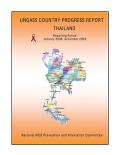
Resource | Publications,
Preparation of this progress report was accomplished by the efforts of the Working Group, comprised of representatives from the government, NGOs, civil society, technical experts and international organizations who collaborated together to produce a comprehensive summary of progress. It is hoped that this reporting process will serve as one tool to advance the AIDS program to reach its targets for access to prevention, care and treatment, universally and equally, and in accordance with the NAP for the prevention and control of AIDS for the period 2007-2011.
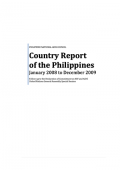
Resource | Publications,
The Philippine National AIDS Council (PNAC) convened the UNGASS core team in September 2009 with support from UNAIDS. Members of the core team were the Department of Health-National Epidemiology Center (NEC), National AIDS and STD Prevention and Control Program (NASPCP) and the PNAC Secretariat; National Economic and Development Authority (NEDA); Health Action Information Network (HAIN); Philippine NGO Council on Population, Health and Welfare (PNGOC); UNAIDS; UNFPA; and, WHO. UNAIDS oriented the core team on the reporting format and the differences between of the 2010 from the 2008 UNGASS report. A work plan for the succeeding months and modalities for data collection was prepared. Workshops for the National AIDS Spending Assessment (NASA) and National Composite Policy Index (NCPI) were also scheduled. Lessons learned from the development of the 2008 UNGASS report informed the planning process for the development of the UNGASS report.
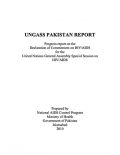
Resource | Publications,
Pakistan pledged its commitment to combat the HIV/AIDS epidemic by adopting the Declaration of Commitment (DoC) at the United Nations General Assembly Special Session (UNGASS) on HIV/AIDS in June 2001. The DoC reflects global consensus on a comprehensive framework to achieve the 6th Millennium Development Goal of ‘halting and beginning to reverse the HIV/AIDS epidemic by 2015’.
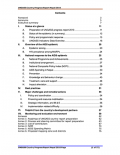
Resource | Publications,
The preparation of the UNGASS country report was widely participated in by a range of sectors like civil society organisations including PLHIV, government agencies; experts group (e.g. SI-TWG); external development partners and other stakeholders. A steering committee led by the National Planning Commission provided the guidance and oversight during the report preparation process. A desk review of a number of documents, studies (e.g. IBBS), and reports was carried out to extract necessary data and information. The UNGASS Nepal Country Progress Report Nepal 2010 covers the period 2008 -2009.
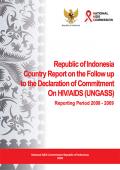
Resource | Publications,
This country report presents information specifically focused on achievements or the Government and civil society including people living with and affected by AIDS in Indonesia related to the Declaration of Commitment of UNGASS. The report covers work in the past two years, 2008-2009 and is a collaborative product reflecting the perspectives of partners in its preparation.

Resource | Presentations,
Half-way through the National Strategic Plan on HIV and AIDS (NSP) period (2007-2011), this Joint Mid-Term Review (JMTR) aimed to assist the National AIDS Program in taking stock of achievements and challenges in implementation so far.
The JMTR had the following objectives:
- To assess the status and dynamics of the HIV epidemic in the Maldives
- To assess whether national responses adequately address the dynamics of the epidemic
- To assess the implementation of the NSP to date, with a focus on priorities and analysis of gaps
- To recommend strategic actions for 2010-2011 to fill the gaps, and estimate the cost of doing so.

Resource | Publications,
For gender comparison, of the stigma index data, the MPG numerators divided their sample allocation evenly by gender of respondents currently living with HIV. The final sample for tabulations is divided with fifty‐one percent female respondents and forty‐nine percent male respondents, respectively 166 and 158 persons that make the sample size amount to a total of 324 respondents. For the purpose of this HIV stigma index, all respondents have a status of HIV positive.

Resource | Fact Sheets,
In December 2009, there were 126 new HIV Ab seropositive individuals confirmed by the STD/AIDS Cooperative Central Laboratory (SACCL) and reported to the HIV and AIDS Registry (Table 1). This was a 232% increase compared to the same period last year (n=38 in 2008) and the highest number ever reported in the registry. This brings the total number for 2009 (January to December) to 835 cases. Of the 126 HIV positive cases reported, 52 were detected through community outreach programs.






